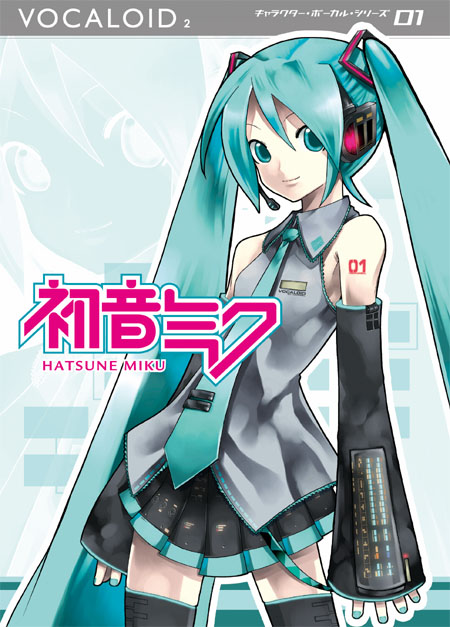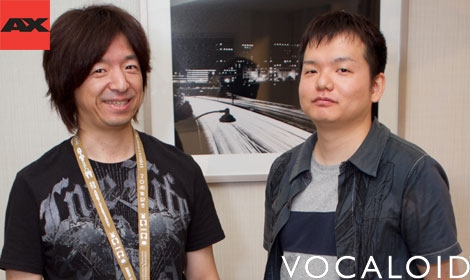The internet sensation Hatsune Miku is well known around the world. Originally a musical voice synthesizer program named Vocaloid 2, fans have created a whole subculture of music, artworks, and even a 3D live stage concert. See what the creative team, Crypton Future Media's CEO Hiroyuki Itoh and Producer Wataru Sasaki had to say in our brief interview as we caught them at the end of day!
T-ONO: Hatsune Miku has gone viral worldwide, a highly successful franchise based off the Vocaloid 2 program. What factors do you think made Vocaloid 2 so popular as opposed to the original, Vocaloid 1?

Sasaki: For Vocaloid 2, the voice was closer to a real human voice. On the other hand, Vocaloid 1 was still under development, so it was hard for it to catch up in real time and it was also difficult to use.
When Vocaloid 2 was released, YouTube, Nico Nico Douga, and other video sharing websites became a lot more popular; so timing wise, it became like an announcement for Vocaloid, increasing its popularity.
T-ONO: Hatsune Miku has been used in various forms, from fan works, to licensed label music, spin-offs such as Black Rock Shooter, video games, toys and figurines. How does Crypton maintain the license rights for the Hatsune Miku franchise?
Sasaki: Having a voice synthesizing software was rare, so it attracted the attention of figure companies, game companies, goods companies, etc. We got a variety of offers and we responded without business issues by balancing those offers. As a result, we got to where we are now.
Itoh: For one of them [license], we have one for Hatsune Miku's illustration and character design. For fans that draws Vocaloid characters and publish it to the web, cosplays, or any fan-based activity, contracts or permissions becomes very complicated. We have a license that fan-based activity will receive no charge; however, if there is any business practice involved, there will be a charge.
For any personal use, we have a license issued from PCL (Piapro Character License) that allow this. This license is similar to software with open-source or GPL that will give free and open source availability, but only for characters. Therefore, you are freely able to use characters while we regulate them through that license. It allows any amateur or fan to do their activity.
On the other hand, there have been an increasing number of companies that wants to do business using the characters. Those companies will need to make a contract, whether to make a trademark or to perform a concert. Since it's business, we will need to take a license fee from those companies.
T-ONO: Can you tell us a little about some of the challenges for the upcoming English version of Vocaloid 3?
Sasaki: To keep Hatsune Miku's voice cute when pronouncing English words is extremely difficult. Right now, we have a few words in English with a Japanese accent. We're trying to find if the American fan are actually seeking for this or would like to have fluent English instead, so we would like to research about this while we're developing.
T-ONO: Do you have any messages for your fans?
Itoh: Hatsune Miku has been going on for nearly four years since it has been released. During those four years, we have many fan made music and videos and portrayed the character through cosplay and illustration. We are grateful for those contents that were made and the fans who supported it.
In Japan, but internationally- whether they are from America, South America, Europe or Asia- Hatsune Miku has spread across the world and we really appreciate it. When the English version of Hatsune Miku is released, I hope that other languages of Hatsune Miku will be released that can further spread it across the world. I hope, just like Japanese music producer or creator, Hatsune Miku will be able to perform across the world!

